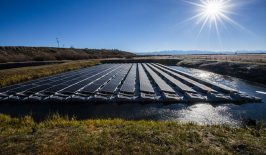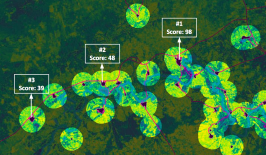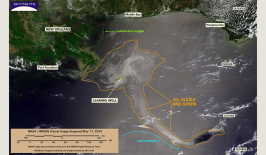Since the Industrial Revolution, economic growth has generally been linked to heavy industry, energy production and manufacturing. And for these industries, the burning of fossil fuels has been indispensable, creating the widespread opinion that carbon emissions and economic prosperity go hand in hand.
However, a new study from Pennsylvania State University has used almost two decades of satellite data on pollution and economic data on economic growth, to work out if this correlation is always strictly accurate. Their findings confirm that countries can indeed reduce their reliance on burning fossil fuels – the main source of air pollution and anthropogenic carbon dioxide in the atmosphere – without having to go without economic growth.
Their report, published in Environmental Research Letters, looked at three main variables: aerosol optical depth (AOD) from Moderate Resolution Imaging Spectroradiometer satellites, FFCO2 emissions from the Open-Data Inventory for Anthropogenic Carbon Dioxide and World Bank Gross Domestic Product information between the years 2001-2018. Overall, these three variables provide good indicators for a region’s air pollution (AOD), carbon emissions (FFCO2) and economic growth (GDP). Only emissions over a certain threshold were considered, to exclude natural carbon emissions, or low-level local emissions such as biomass burning.
Their findings suggest that – in some situations at least – the link between growth and emissions can be broken. While on a continental level, there is still a strong relation between the two, certain countries have been able to buck the trend. This suggests that regional policy decisions, or changes in local infrastructure, may be able to break those links. For example, although high-GDP countries, such as the USA or European nations, tend to have high carbon emissions, their overall use of fossil fuels is dropping, while GDP continues to grow.
Meanwhile, in these same countries, air quality continues to improve, as new industrial technologies and government regulations are introduced. Even China – where fossil fuel use is growing and economic growth is high – air quality is improving. This is thought to be down to the tightening of air quality standards since 2014. In general, it was noted that air pollution and carbon emissions didn’t in fact correlate so closely to the overall economic level of a country, but instead to its rate of economic growth.
What Does This Mean For Economies in the Global South?
Unfortunately, with the exception of China, the strongest examples of this kind of decoupling was found to be located in high-GDP countries in Europe and North America. While for most countries in the Global South, especially in Africa and Asia, the traditional correlation between pollution and economic growth remains. The fast-growing economies of these regions generally produce comparatively low – but nevertheless increasing – carbon emissions and increasing air pollution.
This suggests that some Global South states may not yet have the technological ability or government oversight, or indeed willingness, to achieve this decoupling. Some nations, however, are outliers to this trend. For example, Tajikistan and Uzbekistan have growing GDPs, but decreasing fossil fuel use, possibly because their economies are tied more closely to agriculture and tourism.
The report is the first of its type to unite these three variables over such a long period and although it does provide interesting insights, it may only suggest cautiously optimistic reading. For one thing, the consumer economies of the Global North are heavily based on cheap goods being produced in countries of the Global South. So, although their own emissions may be falling, they are still benefiting economically from the increase in fossil fuel use and air pollution in developing nations. Indeed, the economies between the Global North and South are becoming increasingly interdependent, raising questions about the value of tying carbon emission information to individual countries whose economies do not operate on closed nation state loops.
However, if the global economic standard can be shifted away from unsustainable consumerism to a more sustainable basis built on steady, if slower, economic growth, some headway could perhaps be made in decreasing global emissions. What this study suggests is that technology and government policy can unite forces to maintain economic growth without an obligatory increase in air pollution. In this way, states in Asia and Africa could travel a different road to economic prosperity – unlike the emissions-intense one travelled by high-GDP countries in the past – that does not necessitate vast levels of pollution.
However, even this conclusion brings ethical issues. If American and European states can begin to wean themselves off fossil fuels, this is only partly because they have developed the requisite technological and economic ability – including the resulting political stability – to do this. This ability can, in large part, be attributed to their own intense use of fossil fuels in the preceding decades before this study. Demanding Global South nations limit emissions on par with those of the North is, at best, hypocritical.
So, if any serious global effort is going to be made in terms of reducing carbon emissions, Global South nations may need to receive more support from those in the North in order to counteract the disadvantages they will experience from limiting fossil fuel use and more investment in initiatives to support the cleaner development of their economies. If we can ensure that the Global South doesn’t get left to make the same mistakes as the Global North did in the past, there’s hope that, as the report states, “with more mature technologies and renewable energy, economies can keep growing without compromising their environment and population health.”
This article is part of the RESET Special Feature “Satellites for Sustainable Development”. Click here to explore all of the articles in the series.






